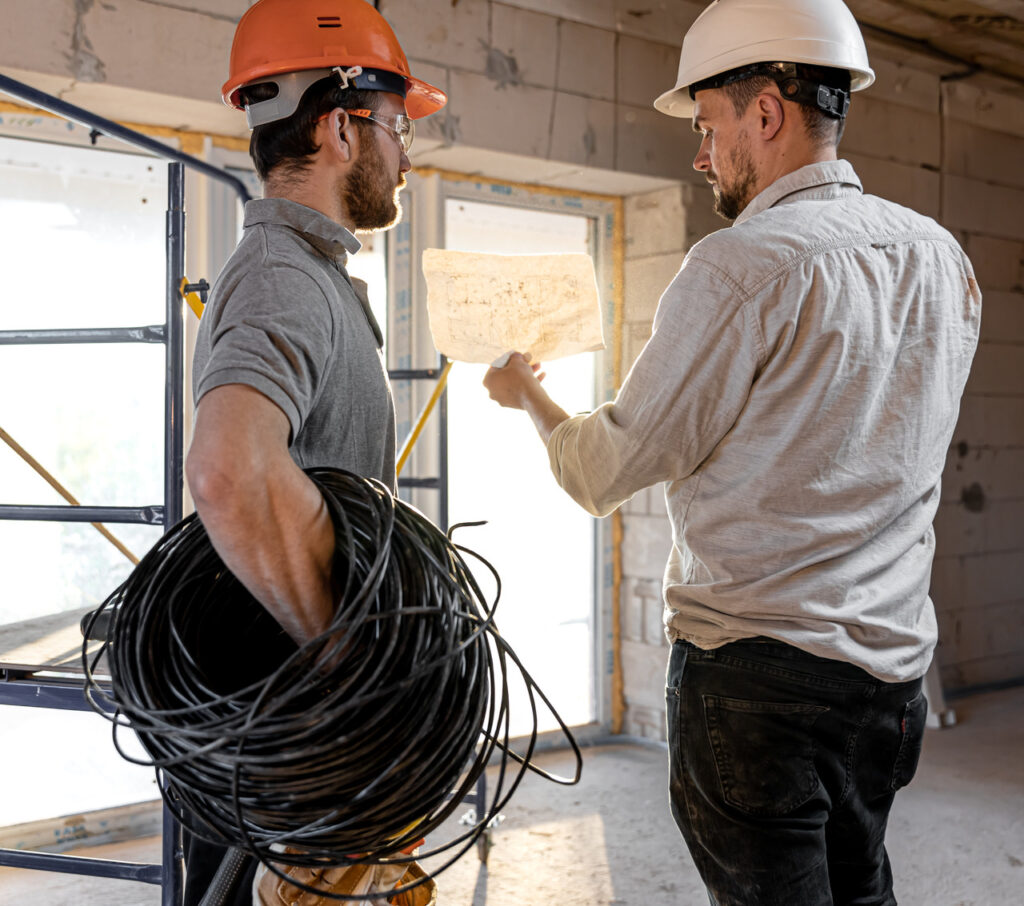The popularity of smart offices is on the rise as they leverage cutting-edge technology to improve efficiency, productivity, and collaboration. The backbone of any smart office is its wiring infrastructure—without it, the technology can’t function smoothly. Proper planning and execution of construction wiring ensure a secure and dependable office setup.
If you’re considering building or upgrading to a smart office, this guide will walk you through everything you need to know about construction wiring, from planning to implementation. Let’s get started.
Understanding Smart Office Infrastructure
Smart offices rely on a sophisticated web of interconnected technologies to create a dynamic, responsive environment tailored to your business needs. Here are some core technologies that power smart offices:
- IoT Devices: From smart thermostats to connected printers, IoT devices streamline processes and provide valuable data.
- Automation Systems: Automate lighting, HVAC, and even conference room bookings for optimal efficiency.
- High-Speed Internet: The heart of any smart office, enabling smooth communication and seamless connectivity.
- Smart Lighting: Adjusts brightness and color to save energy and enhance employee comfort.
- Security Systems: May include CCTV, biometric access control, and real-time activity monitoring.
A cabling contractor works with your architect, interior designer, and IT team to ensure that these technologies are integrated seamlessly into the building infrastructure. They ensure your office functions at its best while optimizing energy consumption and connectivity.
Planning Construction Wiring for a Smart Office
Effective smart office wiring begins with thorough planning, starting with an evaluation of your office’s current and future technology demands. What systems and devices are needed now, and what could be added in the coming years? A cabling contractor plays an essential role in assessing these needs so you can future-proof your office.
Structured cabling is a must for scalability. This means organizing all cables—even as technology advances—into a unified system that remains easy to manage, upgrade, or troubleshoot. Be sure to align your plans with industry standards, such as BICSI and NEC guidelines, which ensure safety and compliance.
Finally, fostering collaboration between IT teams, contractors, and electricians is pivotal. They should work together to design a wiring system that balances technical requirements and the organization’s goals.
Essential Wiring Components for Smart Offices
The success of any smart office hinges on laying the right foundation with these wiring components:
- Power Wiring: Smart offices require consistent and sufficient power distribution to support all devices. Backup solutions, like generators or uninterruptible power supplies (UPS), safeguard operations from outages.
- Data Cabling: Choosing the right data cables is crucial for high-speed connectivity. Whether it’s Cat6, Cat6a, or fiber optics, investing in quality cabling ensures fast and reliable internet.
- Network Infrastructure: Structured cabling integrates all devices, from IoT gadgets to communication systems, into a seamless network. This makes managing a smart office much simpler.
- Audio-Visual Wiring: Setting up conference rooms, digital signage, and smart displays requires careful AV wiring to ensure high-definition video output, integrated audio systems, and reliable connectivity, enabling efficient presentations and collaboration.
- Security & Access Control Wiring: Integrating CCTV, biometric access, and alarm systems centralizes monitoring and real-time control, enhancing the security and efficiency of the smart office environment.
- HVAC & Environmental Controls Wiring: Features like smart thermostats and air quality monitoring systems require specialized wiring to maintain optimal comfort and eco-efficiency.
Common Challenges and How to Overcome Them
Implementing wiring for smart offices isn’t without its challenges. Here are a few common issues and how to address them.
Retrofitting Existing Buildings
Retrofitting smart office wiring into older buildings can be both complex and expensive. A skilled cabling contractor can help by assessing the existing infrastructure and finding creative ways to integrate new wiring while minimizing disruption.
Signal Interference and Latency
When too many devices operate on the same frequency, it creates interference and slower connectivity. Upgrading to fiber optic cables or structured cabling with shielding can help alleviate this problem.
Balancing Budget with Quality
Investing in quality wiring components and infrastructure may seem expensive upfront, but it pays off in the long run. Cutting corners now could lead to costly repairs or replacements down the road. A skilled cabling contractor can help you find a balance between budget and quality.
Ensuring Cybersecurity
Smart office networks are particularly vulnerable to cybersecurity threats. To mitigate this risk, work with your IT provider or team to prioritize network security measures, including encryption protocols, firewalls, and regular network monitoring.
Start Your Smart Office Journey with AxioTech
Every smart office starts with carefully planned construction wiring. Whether you’re building from scratch or upgrading your current space, collaborating with the right cabling contractor will save you time, money, and headaches down the road.
With over a decade of experience in pre-construction wiring, AxioTech is your trusted partner in creating efficient smart offices. Contact us today for a consultation and take the first step toward revolutionizing your workspace.
Contact us at AxioTech Solutions to future-proof your space!


